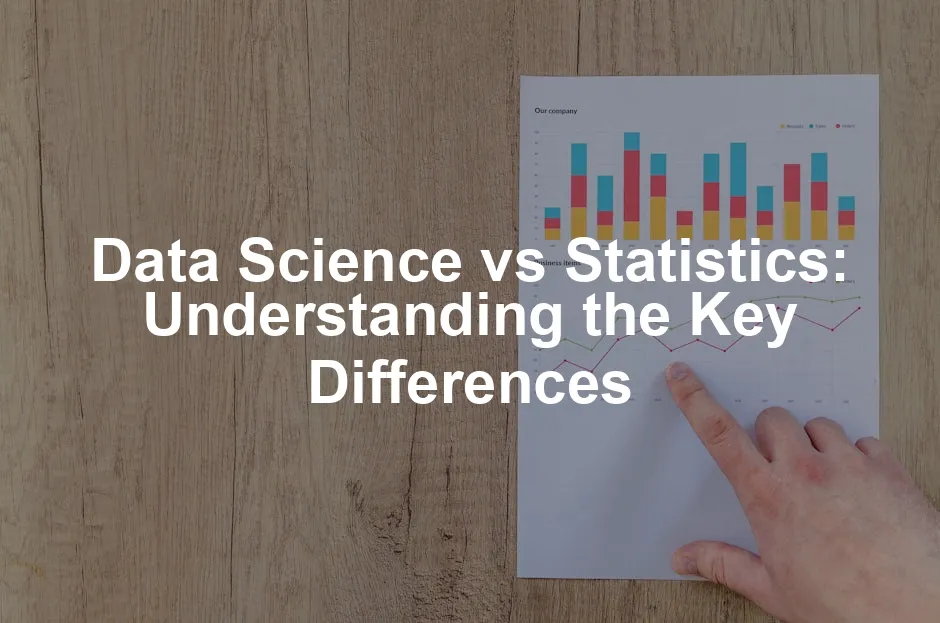Introduction
In a world awash with data, the significance of data science and statistics has skyrocketed across various industries. From finance to healthcare, businesses are leveraging data to drive decisions and shape strategies. Amid this data frenzy, it’s crucial to understand two pivotal fields: data science and statistics.
At first glance, these concepts might seem interchangeable. They both harness data to generate insights. However, they possess distinct characteristics that set them apart. This article aims to clarify the nuances between data science and statistics, their unique applications, and the career paths that each offers.
Data science is an interdisciplinary field that combines mathematics, statistics, and computer science. It digs into datasets to extract meaningful patterns and insights, often employing machine learning techniques. On the other hand, statistics is a branch of mathematics focused primarily on data collection, analysis, and interpretation. Statisticians work with sample data to infer conclusions about larger populations.
Understanding the differences between these two domains is essential for anyone considering a career in either field. By the end of this article, you’ll have a clearer picture of what data science and statistics entail, their applications, and the career trajectories they offer.
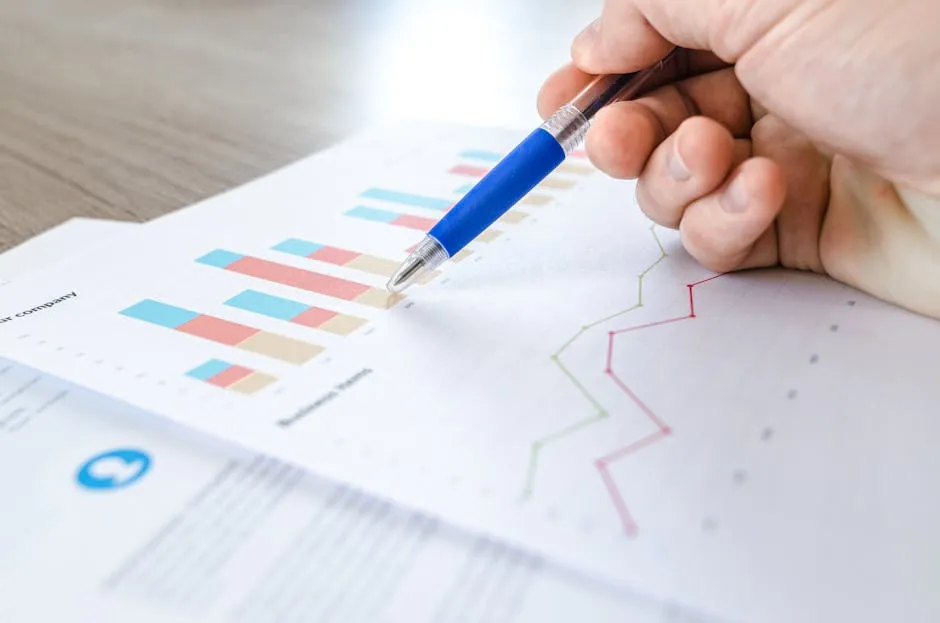
Overview of Data Science and Statistics
What is Data Science?
Data science is the art and science of transforming raw data into actionable insights. It involves a multi-step process that includes data collection, cleaning, analysis, and visualization. With its roots in statistics and computer science, data science is inherently interdisciplinary.
Data scientists wear many hats. They are part statistician, part computer scientist, and part business analyst. This blend allows them to tackle complex problems across various industries. They utilize programming languages like Python and R to analyze large datasets and build predictive models. For a deeper dive into the importance of Python in data science, check out this introduction to statistical learning with Python.
If you’re looking to enhance your data skills, consider picking up Python for Data Analysis. This book will guide you through data wrangling with Pandas, NumPy, and IPython, setting a solid foundation for your data science journey!
Understanding the role of programming languages like Python is crucial for data scientists. Learn more about Python’s applications in data science.
Key processes in data science include data collection, where relevant data is gathered from multiple sources. Next comes data cleaning, which ensures the dataset is free of errors and inconsistencies. Then, data scientists conduct exploratory data analysis (EDA) to uncover patterns. Finally, visualization techniques are employed to present findings in an understandable way.
Data science is not merely about crunching numbers. It’s about storytelling with data, providing insights that can drive business decisions and innovations. As industries continue to generate vast amounts of data, the role of data science becomes increasingly vital.
In summary, data science is a dynamic field that merges statistics, computer science, and domain expertise to extract value from data. Its applications are vast, ranging from fraud detection in finance to personalized recommendations in e-commerce. Understanding data science’s intricacies opens doors to numerous opportunities in today’s data-driven landscape.

What is Statistics?
Statistics is a branch of mathematics that centers on collecting, analyzing, interpreting, and presenting data. Its primary focus is on drawing conclusions from sample data to make inferences about larger populations. Statistics is essential in various fields, including economics, psychology, and health sciences, where data-driven decisions are crucial.
Traditional statistical methods involve a range of techniques, such as descriptive statistics, inferential statistics, and regression analysis. These methods help researchers summarize data, test hypotheses, and make predictions. By applying rigorous methodologies, statisticians ensure that their findings are reliable and valid.
For instance, in market research, statistics play a pivotal role in understanding consumer behavior. Statisticians might analyze survey data to determine customer preferences, helping businesses tailor their strategies effectively. Similarly, in healthcare, statistical analysis is vital for evaluating the effectiveness of treatments and public health interventions. By analyzing data from clinical trials, statisticians can provide insights that guide policy decisions and improve patient outcomes.
Overall, statistics serves as a foundational tool for data analysis, enabling professionals to derive meaningful insights from data and support informed decision-making across various sectors.
Key Differences Between Data Science and Statistics
Education and Skill Requirements
Data Science
Data science is a rapidly evolving discipline that combines elements from various fields, including statistics, computer science, and mathematics. Typically, aspiring data scientists pursue degrees in STEM fields, with a strong emphasis on programming skills. Understanding languages like Python and R is crucial, as these tools are widely used for data analysis and model building.
Beyond technical know-how, data scientists must also develop a suite of soft skills. Effective communication is paramount, as they often present complex findings to non-technical stakeholders. Teamwork is also essential, as data scientists frequently collaborate with cross-functional teams to solve business problems.
Key skills for data scientists include:
- Proficiency in Python and R for data manipulation.
- Familiarity with machine learning algorithms.
- Data visualization skills to present findings effectively.
- Strong analytical thinking and problem-solving abilities.
This blend of technical and interpersonal skills makes data scientists versatile professionals, capable of navigating both the technical and strategic aspects of data-driven projects.
To further enhance your skills, consider reading Data Science for Business: How to Use Data. This book provides actionable insights that can help you bridge the gap between data science and business strategy!

Statistics
Statistics is a branch of mathematics that focuses on collecting, analyzing, interpreting, and presenting data. Typically, individuals pursuing a career in statistics hold degrees in mathematics or statistics. This educational background equips them with the necessary skills to understand complex mathematical concepts and statistical theories.
Key skills for statisticians include a solid grasp of statistical theory and hypothesis testing. They rely on these competencies to analyze data sets and draw meaningful conclusions. Additionally, analytical thinking plays a crucial role. Statisticians must evaluate data critically and identify patterns or trends that may not be immediately apparent. Attention to detail is equally important, as even minor errors can lead to incorrect conclusions.
Statisticians work across various fields, including healthcare, finance, and social sciences. Their ability to apply statistical methods ensures that decisions made based on data are sound and reliable.
Methodologies and Approaches
Data Science Methodologies
Data science methodologies encompass a structured workflow. This process begins with data acquisition, where relevant data is collected from various sources. After gathering the data, the next step is data cleaning. This crucial stage removes errors and inconsistencies, ensuring the dataset is accurate.
Exploratory Data Analysis (EDA) follows, allowing data scientists to uncover patterns and trends. This phase is often where the magic happens, as insights begin to form. Once the data is ready, modeling comes into play. Data scientists use various algorithms to create predictive models.
Deployment is the final step. Here, models are integrated into applications or systems, enabling real-time data analysis and decision-making. Machine learning plays a significant role throughout this process, helping to enhance the accuracy and efficiency of the models employed.
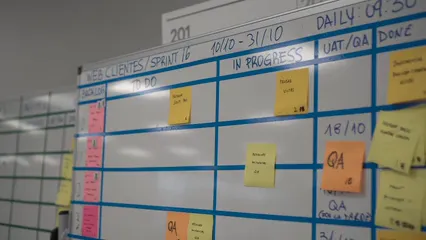
Statistics Methodologies
Statistical methodologies primarily involve traditional techniques. Key methods include sampling, hypothesis testing, and regression analysis. Sampling allows statisticians to draw conclusions about a population based on a subset of data, saving time and resources.
Hypothesis testing is another fundamental aspect. It helps determine whether there is enough evidence to support a specific claim or theory. Regression analysis, on the other hand, explores relationships between variables, providing insights into how changes in one variable can affect another.
The focus of these methodologies is on inference. Statisticians strive to draw conclusions based on the data analyzed, ensuring that results are statistically significant and reliable. This rigorous approach underpins the credibility of their findings, making statistics an essential tool across numerous industries.
Tools and Technologies
Tools in Data Science
Data science utilizes a variety of tools to analyze and interpret data. Here are some favorites among data scientists:
- Python: The go-to programming language for data analysis and machine learning. With libraries like NumPy, pandas, and TensorFlow, it’s a versatile tool.
- R: This language excels in statistical computing and graphics. Ideal for data visualization and complex analyses.
- SQL: Essential for managing and querying relational databases. Data scientists use it to retrieve and manipulate data efficiently.
- TensorFlow: A powerful library for machine learning and deep learning. It’s great for building and training neural networks.
- Apache Spark: This big data processing framework allows for fast data processing and analytics across large datasets.
Data visualization is crucial in data science. Tools like Tableau and Matplotlib help present findings in a clear, engaging way. These visualizations make complex data more digestible for stakeholders. If you’re interested in visualizing your data effectively, consider picking up The Big Book of Dashboards. This book provides real-world business scenarios that can help you visualize your data effectively!
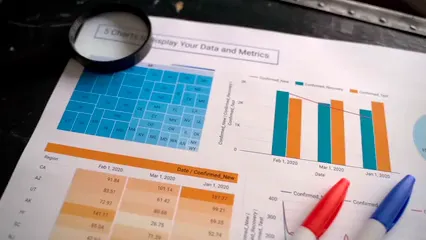
Tools in Statistics
Statisticians rely on several traditional tools essential for data analysis and reporting:
- SPSS: A robust software for statistical analysis. Used widely in social sciences for data management and analysis. For troubleshooting issues, refer to this comprehensive guide on SPSS.
- SAS: Another powerful tool for advanced analytics and data management, often used in business and healthcare settings. You can also check out an in-depth analysis of Arkansas crime statistics to see SAS in action.
- Excel: While basic, Excel remains a staple for data organization, analysis, and visualization. Many statisticians start here before moving to more complex tools.
SPSS is crucial for statistical analysis in various fields. Explore troubleshooting tips for SPSS.
These tools help statisticians perform hypothesis testing, regression analysis, and data modeling. They are vital for ensuring accurate interpretations of data, allowing businesses to make informed decisions based on statistical evidence.

Applications in Industries
Data Science Applications
Data science finds its way into numerous industries through various applications:
- Predictive Modeling: This technique forecasts future outcomes based on historical data. It’s widely used in finance for risk assessment and in marketing for customer behavior predictions.
- Natural Language Processing (NLP): Used in chatbots and sentiment analysis, NLP helps machines understand human language. It’s invaluable in customer service and social media monitoring.
- Computer Vision: This application enables machines to interpret visual data. Industries like healthcare use it for medical imaging analysis, while retail employs it for inventory management.
Healthcare, finance, and e-commerce are just a few sectors leveraging data science. In healthcare, predictive analytics can enhance patient care. In finance, data science helps detect fraud. E-commerce companies use data-driven recommendations to boost sales. If you’re looking to dive into machine learning, consider reading Python Machine Learning. This book will help you learn machine learning and deep learning with Python!
By tapping into these applications, businesses can harness the power of data science to drive innovation and improve efficiency.
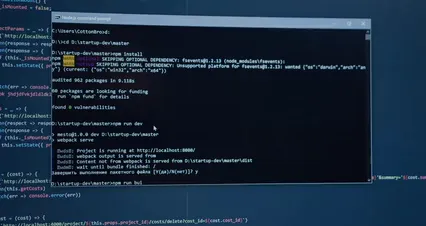
Statistics Applications
Statistics plays a vital role in various traditional applications. You might not realize it, but it’s behind the scenes of many critical processes. Think survey analysis. Ever filled out a questionnaire? Statisticians use that data to draw insights about public opinion or consumer behavior. It’s like taking a pulse on society, but with numbers instead of a stethoscope!
Quality control is another area where statistics shines. Manufacturers rely on statistical methods to ensure their products meet standards. If a batch of toys comes off the production line, statisticians will analyze sample data to see if they’re safe for children. Nobody wants a toy that turns into a choking hazard!
Public health studies also heavily depend on statistics. Researchers analyze health data to understand trends in diseases. For instance, during an outbreak, they utilize statistical models to predict how a virus spreads. This helps in planning interventions and allocating resources effectively.
Industries across the board benefit from these statistical applications. In government, statistics are used to inform policy decisions and allocate budgets based on population needs. Education systems use statistical analysis to measure student performance and improve curricula. Meanwhile, marketing teams delve into survey results to tailor campaigns that resonate with target audiences. If you’re interested in learning more about statistical learning, consider reading Introduction to Statistical Learning. This book will provide you with a solid foundation in statistical learning techniques!
In summary, statistics is like the unsung hero of industries, tirelessly working behind the scenes to ensure quality, safety, and informed decision-making. It might not wear a cape, but its impact is undeniably super!
Please let us know what you think about our content by leaving a comment down below!
Thank you for reading till here 🙂
All images from Pexels

